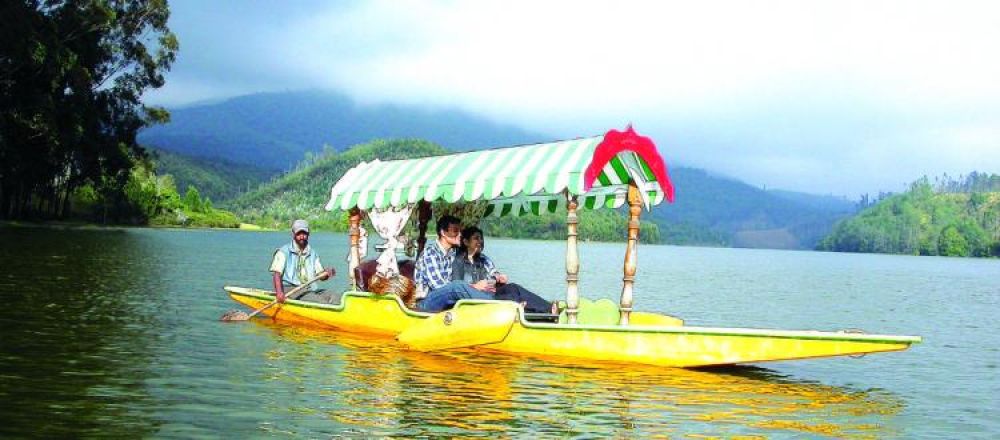

Nestled in the lap of lush green hills, Kundala Lake is a serene reservoir located about 20 kilometers from Munnar in Kerala, India. Known for its picturesque beauty and tranquil environment, it is a favored destination for those seeking peace away from the bustling city life.
Kundala Lake's tourism history can be traced back to the British colonial era when the British planted tea gardens around Munnar and Kundala. The lake itself is an artificial dam, Asia’s first arch dam, which was constructed for a small hydroelectricity project. However, its breathtaking beauty soon caught the eye of visitors. With the growth of tea tourism in the Munnar region, Kundala Lake also came into the spotlight as an attractive recreational spot.
In the early stages, the lake was a hidden gem known mostly to the local populace and a limited number of travellers. Over the years, the popularity of Munnar as a hill station increased, and with that, tourists seeking new vistas began to explore Kundala Lake's enchanting surroundings. The establishment of a golf course by Tata Tea further enhanced the region's appeal to a global audience. As Munnar's tourism industry boomed, Kundala Lake emerged as one of its most picturesque attractions.
One of the key draws of Kundala Lake is the famous Neelakurinji flowers (Strobilanthes kunthiana), which bloom once in every twelve years, covering the hills in a blue carpet. The beautiful Cherry Blossoms that bloom twice a year and the famous Kundala Dam are also significant attractions. Tourists can enjoy pedal boating, shikara rides, or visit the Kundala tea plantations for a complete experience of this enchanting area.
While Munnar and Kundala Lake have always been favored for their natural beauty, the latest trends in tourism focus on sustainable and eco-friendly travel experiences. There has been an increase in demand for homestays and eco-lodges that offer a more intimate experience of the local culture and environment.
Adventurous activities like mountaineering, trekking, and mountain biking are becoming increasingly popular among the visitors, adding a thrill to the serene environment of Kundala. Moreover, the heightened awareness towards the environment has led to initiatives aimed at preserving the unique flora and fauna of the region.
Another important trend in the tourism sector here is experiential travel, where visitors are not just content with sightseeing but are also keen on learning about the local culture and lifestyle. This involves engagement with the local community, cuisine, arts, and crafts, providing an enriching experience that goes beyond the conventional tourist activities.
In summary, Kundala Lake continues to captivate visitors with its timeless beauty while evolving to cater to modern travelers' discerning tastes. The history and the latest trends indicate a promising future for tourism in this region, emphasizing conservation and sustainable development.